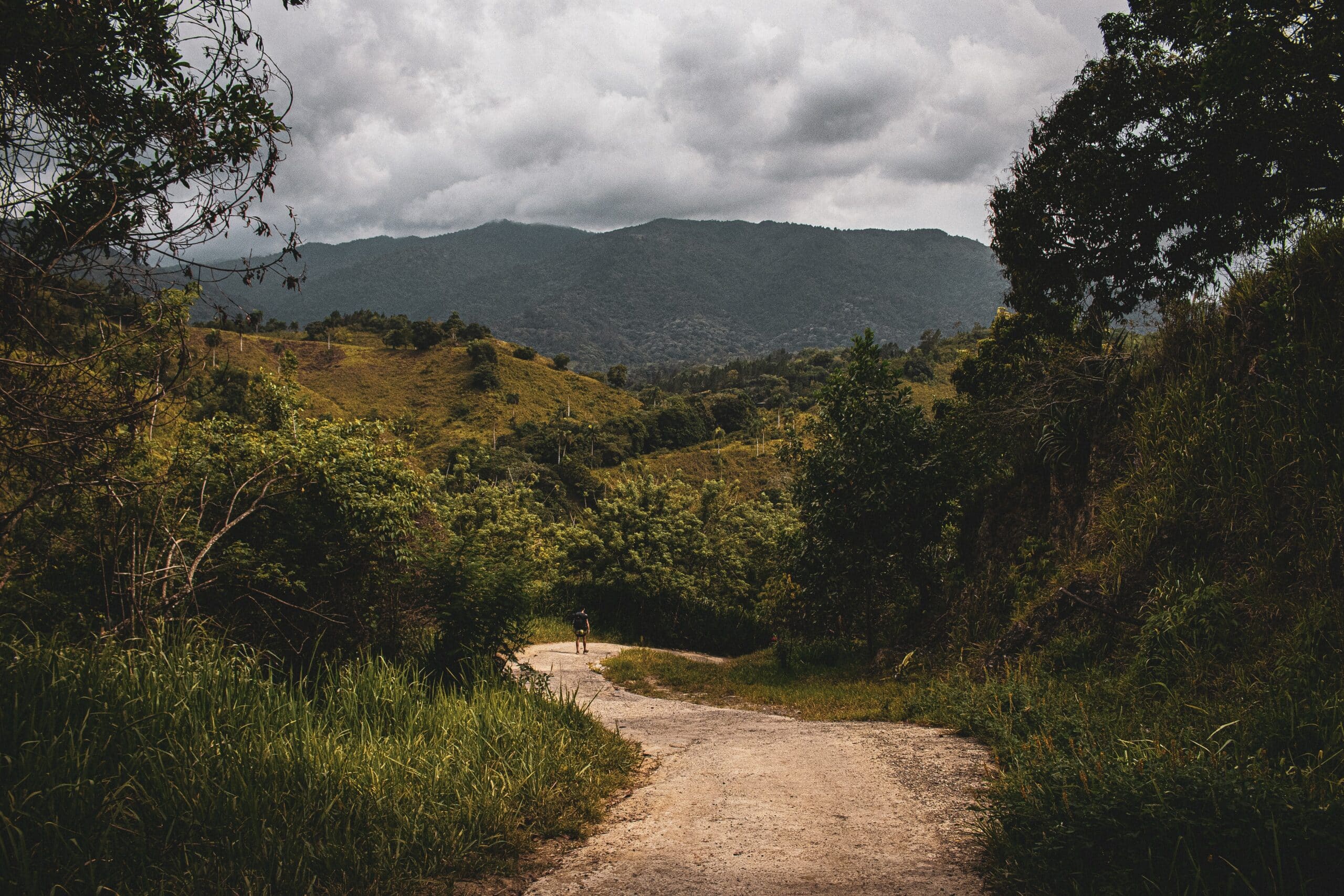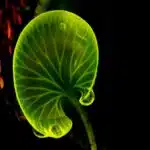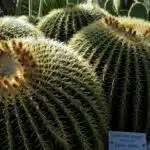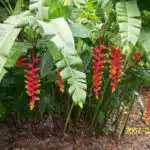Are you looking for a unique and unusual houseplant that will bring a touch of exotic beauty to your home? If so, then the Hoya Obovata is an ideal choice. This delightful plant is sure to be an eye-catcher with its cascading vines and clusters of white blooms. But don’t let its delicate nature fool you — the Hoya Obovata can survive even in difficult growing conditions! As a specialist in botany and gardening, I’m here to provide you with all the essential information about how to grow and care for this stunning plant.
Despite its fragile appearance, the Hoya Obovata is surprisingly hardy. Native to tropical and subtropical regions, it can survive in warm climates without too much trouble. In cooler climates, however, it will need some extra care in order to thrive. With regular watering, light pruning, and adequate humidity levels, this plant can live for many years with minimal effort on your part.
The Hoya Obovata is not only easy to care for but also incredibly rewarding — its small white flowers are quite captivating! These small blooms come out during springtime and last until autumn if cared for properly. With proper maintenance, your Hoya Obovata can provide you with a great display of color throughout the year!
Understanding The Hoya Obovata Plant
According to research, at least 200 species of Hoya exist. A great example is the Hoya obovata, a species native to tropical regions in East Asia. It is a popular choice for houseplant enthusiasts due to its interesting foliage and easy care requirements. As a specialist in botany and gardening, I am here to help you understand how best to grow and care for Hoya obovata.
First of all, it’s important to understand that the Hoya obovata is an evergreen perennial vine with thick leathery leaves. The leaves can be up to three inches long and are dark green in color with a waxy texture. Its stems are woody and will produce clusters of small star-shaped flowers when properly cared for. To get the most out of this plant, you must understand its needs and provide them accordingly.
The Hoya obovata requires bright indirect light but should not be exposed to direct sunlight as it can cause sunburns on its leaves. It should also be planted in well-draining soil that remains evenly moist but not overly wet as too much water will cause root rot. Additionally, it needs high humidity levels so misting or using a humidifier will help keep your plant happy and healthy. Lastly, fertilizing every three months during the growing season with a balanced fertilizer will ensure that your plant has all the necessary nutrients it needs for growth and flowering.
Now that you understand the basics of caring for your Hoya obovata, let’s move on to selecting the right pot and soil for your new houseplant friend!
Choosing A Pot And Soil For Hoya Obovata
The Hoya obovata is a beautiful, exotic plant that can transform any home into an oasis of tranquility and serenity. A symbol of life, growth, and renewal, it is the perfect addition to any home. Choosing the right pot and soil for this special plant is essential for its health and beauty.
When selecting a pot for your Hoya obovata, look for one that offers good drainage. Clay pots are ideal as they will help keep the soil moist but not overly wet. Plastic pots tend to be lighter in weight and may be better suited if you’re looking to move them around frequently. Regardless of the type of pot you choose, make sure it has at least one hole in the bottom so water can drain out freely.
Similarly, when selecting soil for your Hoya obovata, look for something with excellent drainage properties so excess water can quickly escape and prevent root rot or other issues associated with soggy soil. A mixture of peat moss or coco fiber mixed with perlite or vermiculite works well for this purpose. Avoid using regular potting soil as it tends to hold too much moisture and will not provide adequate drainage.
Providing your Hoya obovata with the proper potting materials is key to ensuring its health and continued beauty over time – so choose wisely! With the right setup in place, you can now embark on your journey towards growing a healthy and vibrant Hoya obovata plant in no time!
Planting Hoya Obovata
Planting Hoya obovata is actually easy. The trick is to make sure you’re getting the appropriate pot and soil for your specific climatic conditions. And there’s nothing quite like the satisfaction of seeing a new plant take root and flourish in your garden! So, let’s get right into it.
First off, when planting your Hoya obovata, start by choosing a pot that has good drainage holes at its base. A terracotta or plastic container will work well as they both allow water to flow freely through them. Then you’ll want to select a potting mix specifically formulated for Hoya plants that contains peat moss, coarse sand, and perlite. This mixture will ensure that your plant gets the right amount of moisture and nutrients necessary for optimal growth.
Next up, you’ll need to provide some support for the roots of the Hoya obovata as it grows larger in size. If you’re using a terracotta pot, consider adding a trellis or stake for additional stability during windy days. Once your pot is ready, simply fill it with the soil mixture and gently press down until it is leveled out before adding the plant itself. Then slowly backfill around the roots with additional soil until it reaches just above ground level before giving it a thorough watering to help settle the soil in place. TIP: Add a layer of mulch over top of the soil to help keep moisture levels consistent and discourage weed growth around your newly planted Hoya obovata!
Watering And Fertilizing Hoya Obovata
When talking about the care of Hoya obovata, some may think that this plant is difficult to keep and grow. However, with proper watering and fertilizing techniques, it can be easy to do – and even quite fun! Here’s a four-step process to help get you started:
First and foremost, when it comes to watering your Hoya obovata, don’t overdo it. This plant prefers dry soil and doesn’t need much water. Instead of watering daily or every few days, wait until the soil has dried out before adding more. Additionally, when you do water, use lukewarm water as cold water will shock the roots.
When it comes time to fertilize your Hoya obovata, opt for a fertilizer specifically designed for indoor plants like houseplants or succulents. Additionally, you should only fertilize once every two months in spring or summer. To ensure optimal growth, avoid over-fertilization; this could lead to nutrient burn on the leaves and stunted growth.
Finally, be sure you’re using a pot that is well draining so any excess moisture can escape quickly. A pot with drainage holes at the base is best for allowing water to flow through easily without getting stuck. If you don’t have a pot with drainage holes already installed then consider adding small stones or river rocks at the bottom of the planter before planting your Hoya obovata – they’ll allow any excess moisture to escape from the soil while also helping prevent root rot caused by overwatering.
Now that we’ve discussed how to properly water and feed this fascinating specimen of nature, let’s move onto pruning and training Hoya obovata for maximum health benefits.
Pruning And Training Hoya Obovata
Pruning and training hoya obovata is an important step in providing the best possible care for the plant. To keep it healthy and attractive, pruning should be done regularly to remove dead or unhealthy foliage, as well as to maintain its shape. A single stem of the plant can be trained to climb up a trellis or other support structure. When doing this, it’s important to remember that the leaves are heavy and will pull the stems down if not supported properly.
To prune hoya obovata, start by removing any dead branches or leaves close to the main stem of the plant. Then, using clean, sharp scissors, carefully snip off any damaged or wilting leaves or stems as close to the base as possible. Prune away any stems growing in odd directions that detract from the overall shape of the plant. It’s important to avoid cutting into living wood when pruning; only cut away dead parts of the plant.
Finally, it’s time to train hoya obovata to grow up a support structure like a trellis or wall mount. Gently tie each stem securely with twine at several points along its length so it doesn’t sag from its weight and strain on other sections of itself. Trim back any overgrown sections so they don’t become too dense and heavy for their own good. With regular pruning and training, your hoya obovata will stay looking beautiful for many years to come!
Common Issues Affecting Hoya Obovata
Growing and caring for a hoya obovata can be a rewarding experience, like tending to a miniature garden oasis. Now that we have discussed pruning and training the plant, let’s move onto the common issues that may affect it.
It is important to keep an eye out for signs of pests or disease affecting the plant. These could include leaf spot, mealybugs or spider mites, which can be treated with insecticides or other organic options such as neem oil. Additionally, look out for fungal diseases like root rot which if left untreated can cause fatal damage to your hoya obovata.
Watering should also be carefully monitored as too much or too little water can both lead to problems such as wilting of the leaves and stunted growth. Therefore, ensure you are giving it enough water while keeping in mind not to overwater it so that its roots don’t become soggy. It is also advised to let the soil dry slightly between waterings to prevent any potential root rot issues.
In order to keep your hoya obovata healthy and thriving, these common issues must be addressed in a timely manner – understanding how much light it needs is key for achieving this goal!
Light Requirements For Hoya Obovata
When it comes to the light requirements for hoya obovata, it’s important to keep in mind that this is a tropical plant and so does best with bright, indirect light. It’s also worth noting that too much direct sun can cause damage to the leaves, so be sure it’s not receiving more than 4-5 hours of direct sunlight each day.
If you’re growing your hoya obovata indoors, then you should ensure it has access to plenty of bright, filtered light throughout the day. You can also use fluorescent or LED grow lights if necessary. Keep in mind though that while these are great tools for boosting growth and flowering, they aren’t substitutes for natural light.
When caring for your hoya obovata outdoors, make sure it is planted in a spot where it will receive bright indirect light during the day. This could be near an east or west facing window or on a patio or balcony with some shade during the hottest part of the day. With proper lighting and care, you’ll be rewarded with lush foliage and abundant blooms.
Now that we’ve discussed lighting requirements for hoya obovata let’s move on to temperature needs for this tropical plant….
Temperature Requirements For Hoya Obovata
It is often assumed that plants are content to live in any temperature and environment, but this is not always the case. Temperature requirements can be very particular for some plants, such as hoya obovata, a flowering tropical plant with thick, leathery leaves. As a botanist and gardener, I have found that there are several key elements to consider when growing hoya obovata. Let’s take a look at temperature requirements and how they affect the care of this plant.
Hoya obovata thrives in temperatures between 65-85°F (18-29°C). This range allows for slight variations depending on the season or climate of your area. In warmer climates, you may need to provide more ventilation or cooling than usual to keep it from overheating. On the flip side, it’s important to be aware that temperatures lower than 60°F (15°C) can cause irreversible damage to your plant. Providing adequate warmth is necessary for optimal growth.
To measure the temperature of your home or garden accurately, I recommend investing in an indoor/outdoor thermometer. With this device you can monitor changes in temperature and make sure that your hoya obovata remains within its ideal range throughout the day and night. If necessary, use fans and air conditioners to maintain comfortable temperatures indoors while supplying enough light through windows or grow lights if needed.
Properly caring for hoya obovata requires understanding its specific needs when it comes to temperature – too hot or too cold will both have negative effects on the health of the plant. By monitoring temperatures closely and providing additional ventilation or heating when necessary you can ensure that your hoya obovata will thrive!
Humidity Requirements For Hoya Obovata
Humidity requirements for hoya obovata are like a delicate dance, requiring a perfect balance to create the ideal environment for your plant. As a botanist and gardener, I know that humidity is just as important as temperature when it comes to caring for this tropical indoor plant.
The ideal humidity level for Hoya obovata is 60-70%. This may seem high, but it’s necessary in order to maintain the health of the plant. Too little humidity can cause leaves to turn yellow and dry out, while too much can lead to root rot or fungal issues. To keep the relative humidity at the desired level, you may need to mist your plant regularly or invest in a humidifier.
Remember that air circulation is also key for this species. Make sure there’s enough space between your plants so that air can circulate freely, and avoid overcrowding them in one place. Additionally, keeping plants away from drafty areas will help retain the moisture in their environment and prevent any potential problems from arising.
With the right environment and care, you should be able to enjoy watching your Hoya obovata thrive! Next up we’ll look at propagating these intriguing plants so you can share their beauty with others.
Propagating Hoya Obovata
Gardening with a Hoya Obovata can be an exciting and rewarding experience. It’s like having your own little rainforest in your home! Propagating this exotic plant is one of the most fulfilling activities you can do as a gardener. With some patience, you’ll soon have multiple plants that will provide you with beautiful foliage for years to come.
First things first, it’s important to understand the basics of propagating Hoya Obovata:
- Use cuttings from existing vines to propagate
- Cuttings should be 4-6 inches long and taken from healthy stems
- Make sure the cutting has at least two nodes with leaves or buds present
- Once cuttings are prepared, dip them in rooting hormone for best results
- Plant the cutting in well-draining potting soil and water regularly.
Once planted, you’ll need to provide plenty of humidity for your Hoya Obovata cuttings. To do this, place a shallow bowl of water near the plant or mist the leaves several times a day. This will help ensure that the cuttings take root properly and develop strong roots over time. Keep in mind that propagation takes about 6-8 weeks before new growth appears on the plant.
By following these steps, gardeners can successfully propagate their Hoya Obovata and enjoy its lush foliage for many years to come! Now that you know how to propagate your Hoya Obovata, it’s time to focus on controlling pests and diseases–starting with proper watering habits.
Controlling Pests And Diseases Of Hoya Obovata
Controlling pests and diseases of Hoya obovata is an important step in its cultivation. This vining plant is susceptible to a variety of insects and fungi, so it’s essential to know how to identify and treat them. The most common pests that can affect this plant are aphids, mealybugs, whiteflies and spider mites. These sap-sucking insects can severely weaken the plant, so it’s best to take preventive measures such as proper sanitation and pest control methods.
Fungal diseases like powdery mildew and root rot can also cause damage to this species of hoya. To prevent these diseases from occurring, make sure your plant has good air circulation and adequate light. Also, monitor your hoya’s soil moisture levels; overwatering can lead to root rot, while underwatering will leave the plant more vulnerable to fungal attack.
If you do spot any signs of pests or disease on your Hoya obovata, act quickly by removing affected leaves or stems with disinfected pruning shears, followed by spraying the affected area with an insecticidal soap or neem oil solution. TIP: If you experience difficulty controlling pests or fungal diseases on your Hoya obovata indoors, it might be worth bringing it outdoors for a few hours a day during the warmer months so that natural predators can help keep any infestations at bay.
Supporting Hoya Obovata
Supporting Hoya obovata is essential for its growth and development. This can take many forms such as providing a climbing structure, proper pruning, and regular fertilization. To ensure optimal health, it’s important to understand the needs of this unique plant and how to properly meet them.
When providing a structure for Hoya obovata to climb, choose something that is made of a non-toxic material like nylon or plastic mesh. The mesh should be lightweight and easy to attach to the pot or wall if desired. Pruning should be done in moderation, as this species tends to have thin stems that are easily damaged by heavy trimming. Pinching off the tips of stems will help promote branching and create a fuller-looking plant.
Fertilizing Hoya obovata regularly with an organic fertilizer will help keep it healthy and growing vigorously throughout the year. A balanced formula with equal parts nitrogen, phosphorus, and potassium is recommended so that all nutrients are available in adequate amounts. Avoid overfertilizing as this can lead to excessive foliage growth at the expense of flowers. With proper care, this beautiful tropical species will reward you with stunning blooms!
To ensure optimal health for your Hoya obovata, repotting may be necessary every two years or so when it outgrows its container. Be sure to use fresh potting mix and a slightly larger container than before in order to give roots plenty of room to grow.
Repotting Hoya Obovata
Repotting hoya obovata is like untangling a long and knotted rope. It can be a labor of love, but if done correctly, it can provide the plant with an environment to thrive in. When repotting, you’ll want to make sure that the hoya obovata is comfortable in its new home.
Start by using the right potting medium. A soil-based mix such as loam or compost mixed with organic matter, like peat moss or coconut coir, will help your hoya obovata establish strong roots and promote better drainage. You’ll also want to select a pot that’s slightly larger than what it was previously potted in. This will give your plant more room to expand its root system over time.
Lastly, when transplanting your hoya obovata into its new container, be gentle and take care not to damage any of the delicate stems or leaves. If you’re feeling overwhelmed, enlist the help of an experienced gardener who can provide tips on how best to repot the plant for optimal results. With proper care and attention, your hoya obovata will flourish in its new home!
Common Uses For Hoya Obovata
Hoya obovata is an absolute marvel of nature. With its lush, vining foliage and fragrant blooms, this species of hoya is sure to delight any gardener looking for an eye-catching addition to their outdoor space. But not only does Hoya obovata look stunning, it can also be of great use in a number of ways.
As a specialist in botany and gardening, I believe that the uses for Hoya obovata are truly remarkable. For starters, its dense foliage makes it a great choice as a privacy screen or hedge plant – just be sure to clip off any branches that become too long or unruly. The leaves themselves can even be used in flower arrangements or dried and used as potpourri! While its flowers aren’t overly showy, they do have a sweet scent that many gardeners find pleasurable.
In addition to these uses, Hoya obovata can also be grown indoors – making it a great choice for apartment dwellers or those living in colder climates who want to enjoy their own slice of tropical paradise year-round. With the right care and environment, this houseplant will thrive indoors – so you can get all the beauty of the outdoors without having to go outside!
No matter if you’re growing Hoya obovata indoors or out, its unique beauty and versatility make it an excellent choice for anyone looking to add some interest to their garden or home decoration. It’s no wonder why this species has become so popular among gardeners and houseplant enthusiasts alike – so why not join them today?
Common Questions About Hoya Obovata
When it comes to caring for Hoya obovata, there are many questions that people have. As a specialist in botany and gardening, I’m here to answer those inquiries. Let’s take a look at some of the most common questions about this tropical houseplant.
To start off, let’s talk about the best placement for Hoya obovata. This plant prefers bright, indirect sunlight or partial shade from an east-facing window. Furthermore, it requires moist soil and should be watered when the top inch of soil feels dry to the touch. Here are some other key points to consider when growing this species:
- Keep temperatures between 65-75 degrees Fahrenheit (18-24 Celsius)
- Feed with a balanced liquid fertilizer every two weeks during the warm months
- Prune if necessary to keep shape and promote new growth
- Repot only when needed using fresh potting mix and a slightly larger container
It’s also important to be aware of potential pests that can attack your Hoya obovata – such as mealybugs or spider mites. To prevent infestations, check your plant regularly for signs of pest activity and treat any affected leaves immediately. If you find yourself needing help with pest control, seek out professional advice from an experienced gardener or horticulturist.
Overall, taking proper care of your Hoya obovata is essential if you want it to thrive indoors. With consistent watering and fertilizing practices, plus occasional pruning and repotting when needed, you’ll soon have a healthy houseplant that will last for many years to come!
Frequently Asked Questions
How Often Should I Water My Hoya Obovata?
The care of a Hoya obovata is an art form that requires a delicate balance between giving it too much and not enough water. This is because they are native to tropical climates, so they need frequent but light irrigation. To determine how often you should water your Hoya obovata, think of it like a small child who needs just the right amount of love and attention. Too little and the child won’t develop properly, while too much can cause them to become dependent on you.
In this analogy, watering your Hoya obovata is like showering attention on a child. The plants need regular, but light watering every few days during their active growing season (spring through fall). During the winter months when growth slows down, reduce watering frequency to once every two weeks or so. If you give the plant too much water, it will become root-bound and could suffer from fungal diseases such as root rot or powdery mildew.
To ensure that your Hoya obovata is getting enough moisture but not too much, use your finger to check the soil for dampness prior to watering. If the top two inches are dry, then it’s time for another drink! A good way to remember this rule is by using an empty tuna fish can with holes in the bottom as a ‘drip tray.’ Place it beneath your pot after watering so that you can keep track of how often you’re doing it without having to rely solely on guesswork.
When caring for your Hoya obovata, think of yourself as its guardian – providing just enough love and attention without overdoing it! With patience and consistency, you will be rewarded with beautiful blooms year after year!
What Is The Best Fertilizer To Use On Hoya Obovata?
When it comes to fertilizing Hoya obovata, the key is to provide a balanced approach. This means providing enough nutrients to keep your plant healthy and growing, while not over-fertilizing and causing damage. The best fertilizer for Hoya obovata is one that contains all of the major nutrients, including nitrogen, phosphorus, potassium, calcium, and magnesium. These should be applied in a slow-release form at regular intervals throughout the growing season.
In addition to applying fertilizer regularly, it’s important to monitor the soil pH level as well. Hoya obovata performs best in slightly acidic soil with a pH between 5.5 and 6.5. If the soil becomes too alkaline or too acidic, it can cause nutrient deficiencies which will lead to poor growth and health of your plant. Testing kits are available at most garden centers that allow you to test your soil quickly and easily.
By following these tips on fertilization and monitoring soil pH levels, you’ll be able to keep your Hoya obovata looking its best for many years! Regular watering combined with an appropriate fertilizer schedule is key to helping this plant reach its full potential and providing you with beautiful blooms all year round.
Can I Grow Hoya Obovata Indoors Or Does It Need To Be Outdoors?
Like a wildflower, hoya obovata is a unique and beautiful plant to grow. It’s an evergreen climber with glossy green foliage that can brighten up any room or outdoor space. But how do you care for it? Can it be grown indoors or does it need to be outdoors?
Well, the good news is that hoya obovata can be grown both indoors and outdoors, depending on the climate and environment you live in. To ensure your hoya obovata grows healthy and strong, here are some key tips to keep in mind:
- Provide plenty of indirect sunlight – this will help your plant stay lush and vibrant.
- Make sure the soil drains well – if the soil is too wet, your plant can suffer from root rot.
- Fertilize regularly – look for organic fertilizer that is specially formulated for flowering plants.
- Prune often – this will help keep the foliage looking full and dense.
As a botanist, I highly recommend growing hoya obovata indoors in colder climates as they are more susceptible to frost damage. You’ll want to provide them with plenty of light and water while keeping an eye out for pests or diseases; regular pruning is a must to maintain their shape and health. With proper care and attention, these plants will reward you with year-round beauty!
How Do I Know When It’s Time To Repot My Hoya Obovata?
A hoya obovata is an exotic and captivating species of plant that can bring beauty and life to any home. As with any living thing, it needs the right care in order to thrive. Knowing when it’s time to repot your hoya obovata is essential for its health and longevity. Repotting this unique specimen can be a rewarding experience as long as you go about it in the right way.
The first sign that your hoya obovata needs to be repotted is when its roots start becoming visible through the drainage holes on the sides of the pot. Another telltale sign is when it starts growing too large for its current pot and begins to outgrow it. When these signs are present, you’ll know that it’s time for repotting.
During the repotting process, make sure you have a pot that has adequate drainage holes and is only one size larger than its current pot so as not to overwhelm the tender root system with too much soil or space. You should also use a high-quality potting mix specifically designed for tropical plants, like this plant, so that your hoya obovata gets all the necessary nutrients and moisture it needs to stay healthy. After filling up the new pot with soil, carefully transfer your hoya obovata into its new home while being mindful not to damage or over-compress its delicate root system during the transition.
Once you’ve completed this process, remember to water your hoya obovata regularly but don’t drown it; let the soil dry out between watering sessions so as not to damage or kill any of its fragile roots! With proper care and attention, you’ll soon see evidence of regrowth in no time, giving your hoya obovata another chance at a healthy life indoors or outdoors!
Are There Any Special Care Instructions For Hoya Obovata During The Winter?
Are you ready to take the plunge and care for a beautiful, winter-hardy Hoya obovata? If so, buckle up – caring for this unique species is both a pleasure and an adventure! With its evergreen foliage and bright yellow flowers, it will captivate you in ways that are almost unbelievable.
But don’t let that fool you into thinking that caring for this plant is easy – it requires extra special attention during the winter months if it’s going to stay healthy and vibrant. That’s why today we’ll be discussing all the necessary care instructions for Hoya obovata during the coldest season of the year.
Firstly, it’s important to remember that Hoya obovata does not like cold temperatures or drafts. It should be kept in a spot where the temperature doesn’t drop below 55 degrees Fahrenheit. Furthermore, you should reduce watering by half during winter because this species loves to remain on the drier side during this time of year. Additionally, make sure to keep an eye out for any pests while inspecting your plant regularly as they can easily wreak havoc on its delicate leaves.
Ultimately, with a little bit of patience and dedication, your Hoya obovata will thrive through even the harshest winter months. Its unique beauty is something that deserves your attention and care so don’t hesitate to give it everything it needs!
Conclusion
In conclusion, Hoya Obovata is an incredibly resilient and rewarding plant to care for. With regular watering, appropriate fertilizing and repotting, it will thrive in any indoor or outdoor environment. This charming flower is sure to bring joy to any home with its sweet fragrance and delicate beauty.
Caring for this flower may seem daunting at first, but with the right know-how and a bit of patience, you can easily become an expert Hoya Obovata gardener! With a little bit of tender love and care, your Hoya Obovata will soon bloom into a veritable oasis of color and fragrance – a true pastoral paradise.
So go ahead, cultivate your green thumb–you’ll be surprised at how easy it is to create a little slice of Eden in your own backyard! In no time at all, you’ll be able to revel in the blissful aroma of success as your Hoya Obovata blooms before your eyes.





























